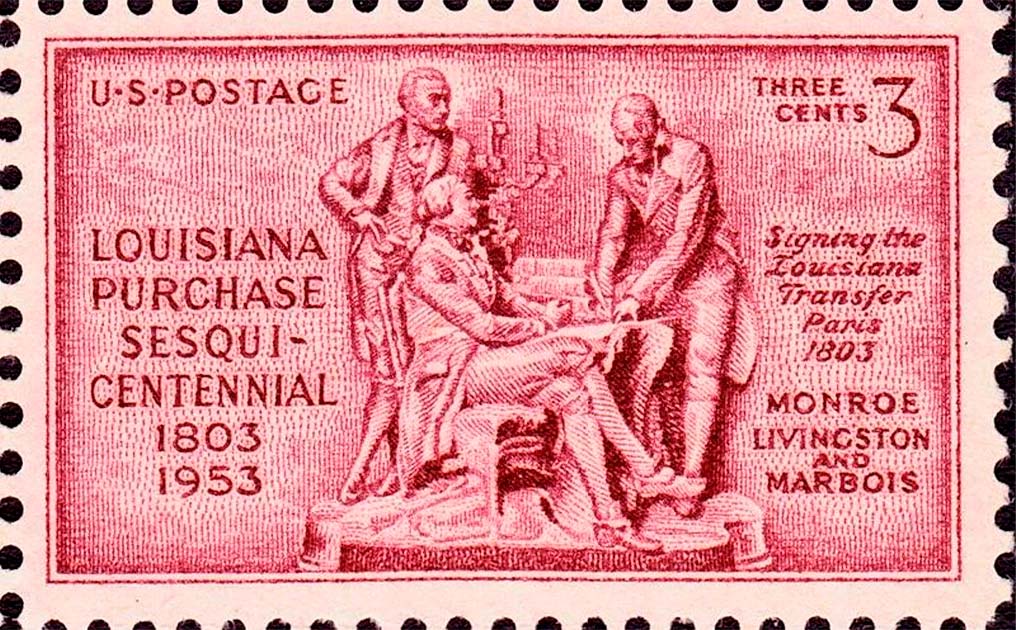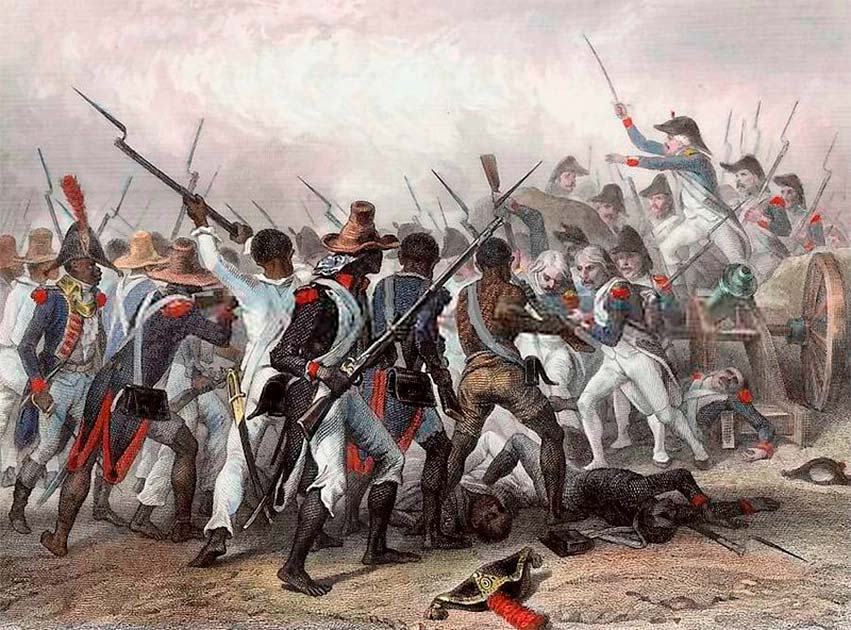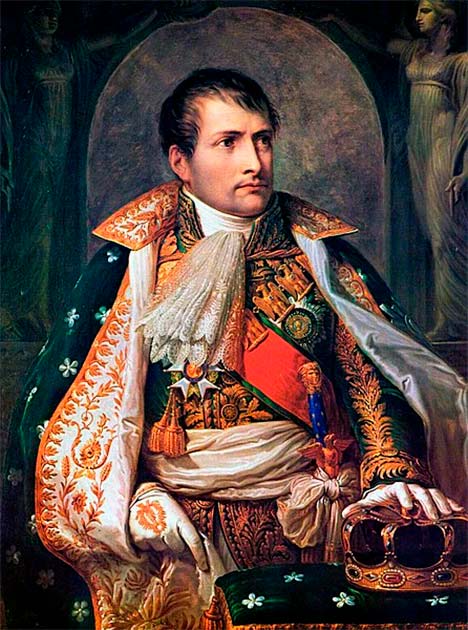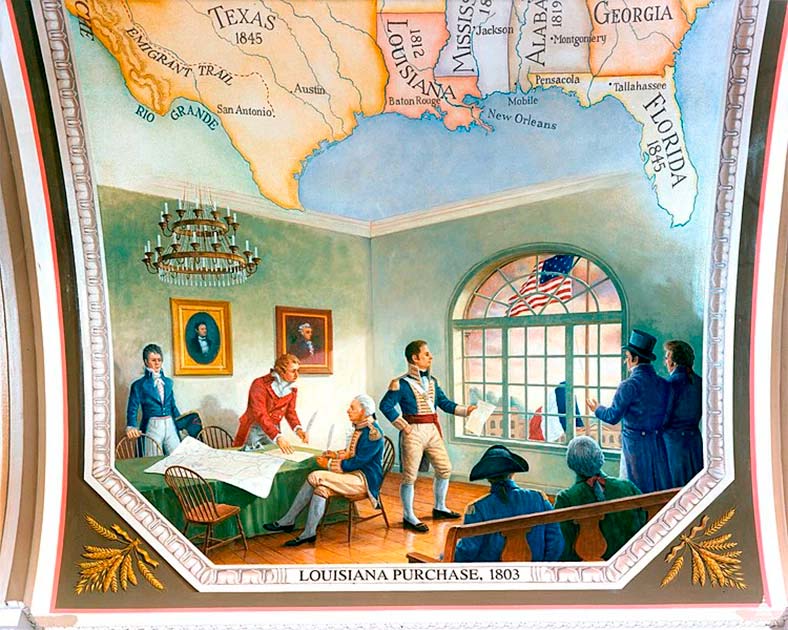In 1803, a monumental event occurred that would shape the history of the United States, and Europe, from then on. The Louisiana Purchase, a land deal between the United States and France, doubled the size of the nascent United States, and provided France with much-needed funds to support their military campaigns in Europe.
It was a bold move that changed the geopolitical landscape of the world and was a testament to the power of negotiation and diplomacy in resolving complex issues. Today, the Louisiana Purchase stands as a fascinating example of international cooperation and the lasting impact it can have on history.
But there is a lot to unpick here? For the Americans it looked like a bargain, raising questions as to why it was sold so cheap. As for the French, well they may have seen it as money for nothing.
What was the Louisiana Purchase?
The Louisiana Purchase has been described as the greatest real estate deal of all time and it’s easy to see why. In 1803 France and the United States struck a deal that saw France transfer its holding of the Louisiana Territory (a massive area west of the Mississippi River) to the United States. All for the low, low sum of $15 million.
The deal essentially saw the United States’ territory almost double overnight. The Louisiana territory was around 827,000 square miles (2.1 million square km) in size, a territory which today includes parts of 19 states. It was a valuable piece of real estate that let America embark on its next stage of development, and arguably the point at which the “United States” as we know it came into being.

The deal was negotiated by US president Thomas Jefferson and his envoy, James Monroe. They desperately wanted to expand their young nation’s territory westwards and take the strategically important port of New Orleans.
On the French side, the deal was negotiated by the French diplomat and statesman, Charles Maurice de Talleyrand, with the assistance of Francois de Barbe-Marbois, a French Minister.
Why Did France Want to Sell?
If the Louisiana territory was so important then why did the French sell it in the first place? It wasn’t like Napoleon to willingly give up land, he was normally the one grabbing it. And why let it go for such a song? Well, the French had several good reasons.
Firstly, it was for eminently practical reasons. It should come as no surprise that the main reason the French let the land go is that they simply needed the money. Badly.
France was recovering from a series of wars in Europe including the likes of the Seven Years’ War that had ended only forty years prior in 1763. Minor conflicts had erupted ever since and, even worse, it looked increasingly likely that another war between France and Britain was unavoidable.
Britain and France had a history of long, drawn-out, and expensive wars. France’s leader, Napoleon Bonaparte, knew full well that if he had any hope of beating the Brits he needed money to fund his military campaigns.
He was absolutely right. The same year the Louisiana deal was signed, the Napoleonic Wars began. This started as a war between France and England but soon other European powers like Austria, Prussia, and Russia all joined the Brits against the French. The war raged on for twelve years.

Then, there was the Haitian Revolution. 1791 had seen a massive slave rebellion in the French territory of Saint-Dominique (known as Haiti today), the Caribbean’s most prosperous colony. The revolution was successful and by 1804, Haiti had gained independence. Great for Haitian slaves, but not so great for France.
The loss of the colony was a significant blow to French interests in the region. In particular, it had significantly weakened France’s hold on the Louisiana territory.
Jefferson had once feared that Napoleon would use Saint-Dominique as a staging ground for a war with the United States. However, years of fighting Haitian rebels, and yellow fever, had put Napoleon’s plans of invading America on ice permanently.
This led to the third reason: Napoleon’s strategic concerns about the Americas. Bonaparte, for all his faults, was a keen strategist. He feared that the British might take control of the Louisiana Territory, giving them a significant advantage in North America. The French leader hoped that selling the land to the States would prevent the Brits from gaining a foothold in the region.
As mentioned above, French forces in the area had been severely weakened by the events of the Haitian revolution. The Louisiana territory was a long way away and Napoleon had more immediate threats at his front door. He knew that realistically he had little to no hope of defending this faraway territory.
Much has been made of how the deal was a triumph of relations between the US and France and how France wanted to avoid Britain taking the territory. But the truth is France also feared America would simply just take the territory. By this point in history, the Americans already had a healthy reputation for simply taking land they wanted.
There’s also a strong argument to be had that attempting to hold on to the Louisiana territory simply wasn’t worth all the effort. It was much simpler to just sell it. France had struggled to effectively settle and develop the vast land.
It was home to many indigenous peoples and a diverse mix of cultures, many of whom were happy doing their own thing. The French government realized that they were unable to take advantage of the territory’s vast resources like land, timber, and minerals and so, decided it was better to sell.
Was It a Good Deal?
This is somewhat open to debate. The French sold the territory for $15 million ($300 million today), or around 3 cents an acre. No one can argue that for America that was anything but an absolute bargain.
- The Curse of Tippecanoe: Are some US Presidents Fated to Die in Office?
- Who Was Squanto? Patuxet Emissary for the Pilgrims
But it was also a good deal for the French, even if they had originally hoped for more. The French had originally gone into negotiations asking for $20 million but as the deal dragged on, and Napoleon became more desperate for funds, had lowered it to $15 million.
It was a fair price because the French were desperate for finances. Selling at 3 cents an acre allowed them to gather the funds needed for the coming war as well as avoid handing the Brits a strategic win. It also allowed the French to focus on their problems in Europe, rather than having to worry about a far-off land they knew they couldn’t really use.

$15 million might seem cheap, and Jefferson rightly received applause for the price, but the fact is if the Americans had held out they might have gotten an even better deal. To the French, any money was better than no money, or even worse, another enemy.
What Did the French Spend it On?
Weapons and soldiers, mainly. The proceeds of the deal gave the French war chest a much-needed shot in the arm. This allowed Napoleon to continue his military campaigns in Europe and pursue his goal of expanding French influence.
Some of the money was also used to pay off old debts. France’s government was in the red with several creditors, including banks and other nations. The cash injection from the Louisiana Purchase was used to settle some of these old loans.
Finally, some of the money was spent in France. The government spent some of the funds on supporting domestic infrastructure like the construction of roads and bridges. Some of it was even used to fund scientific expeditions and research.
The Louisiana Purchase was a landmark event in the history of the United States and France, with significant implications for the rest of the world. It helped the United States double its size, paved the way for westward expansion and economic growth, and played a key role in shaping the geopolitical landscape of Europe.

The sale of the Louisiana Territory also allowed France to raise much-needed funds to support its ongoing military campaigns and demonstrated the power of diplomacy and negotiation in resolving complex issues. The Louisiana Purchase remains a fascinating and important example of international cooperation and its lasting impact on history.
Some argue that the world we live in today is the world created by the Louisiana Purchase. It left the United States as the dominant power on the North American continent, with a clear path to the Pacific. And it gave Napoleon the wherewithal to plunge Europe into a decade of war and destruction. The current world order, with the United States as the richest country in the world, started here.
Top Image: Map of the territory sold in the Louisiana Purchase, but in effect it allowed the nascent United States to expand right across North America. Source: NARA / Public Domain.